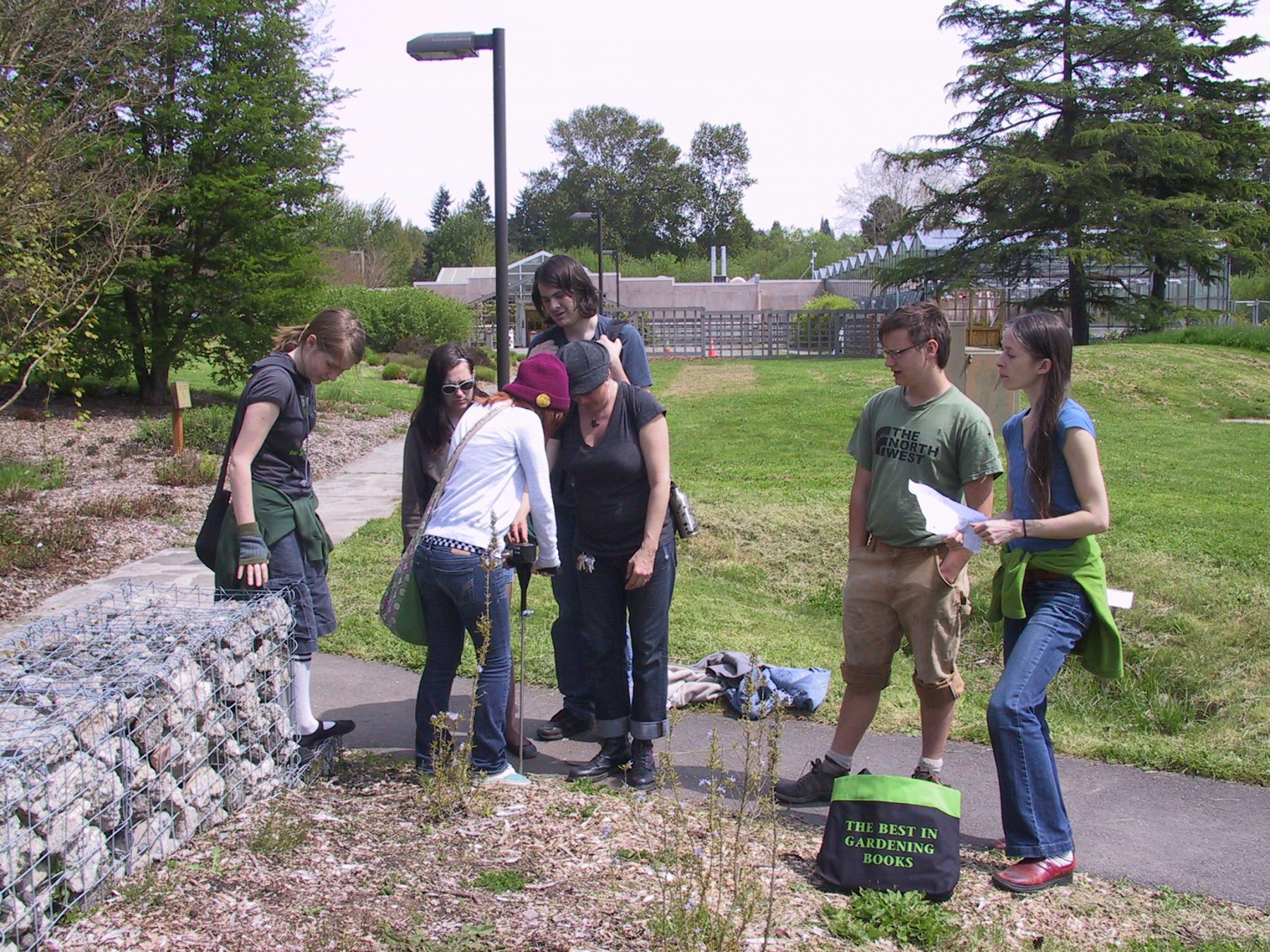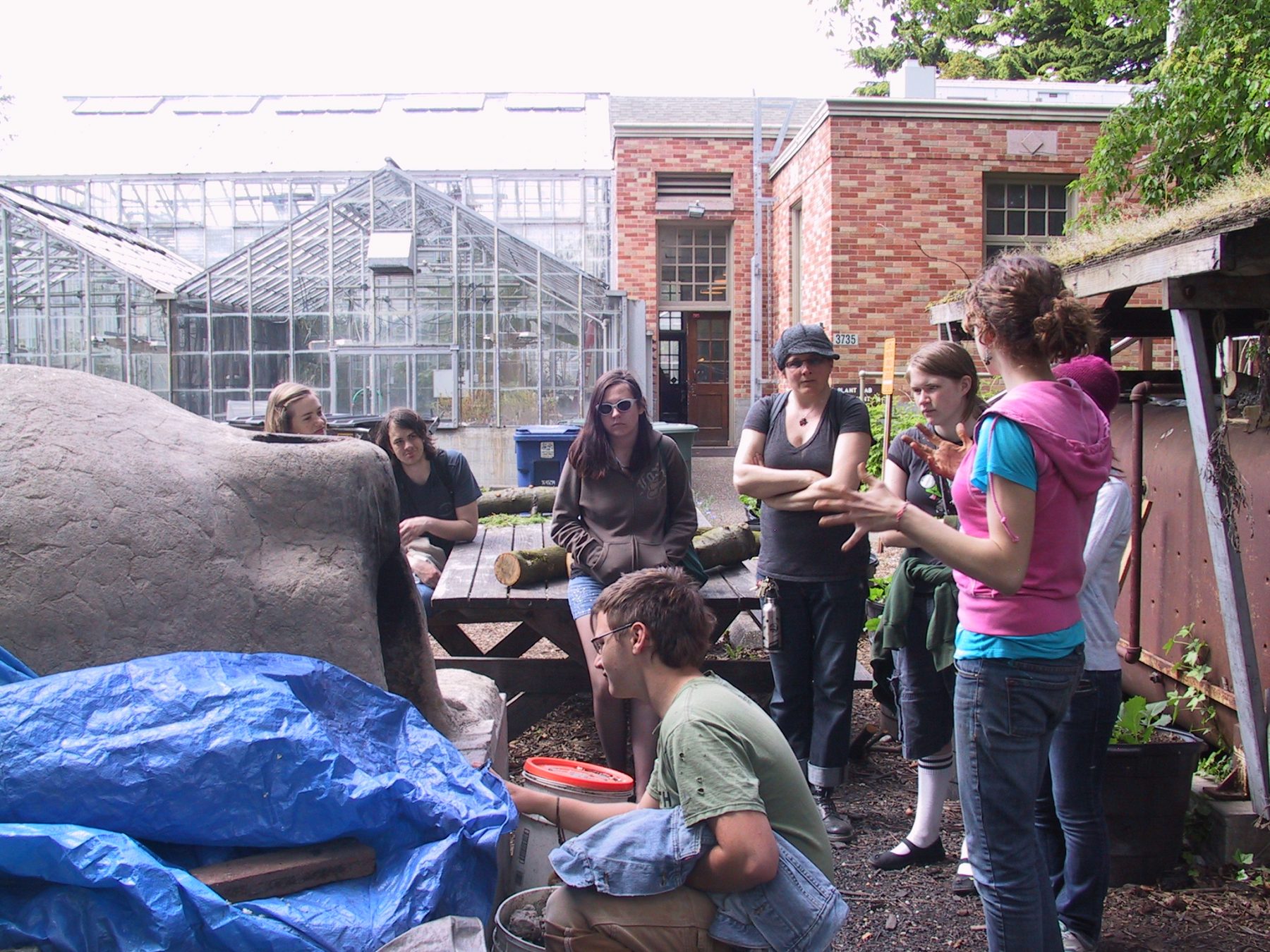GROW participants visit CUH and the UW Farm
May Fieldtrips
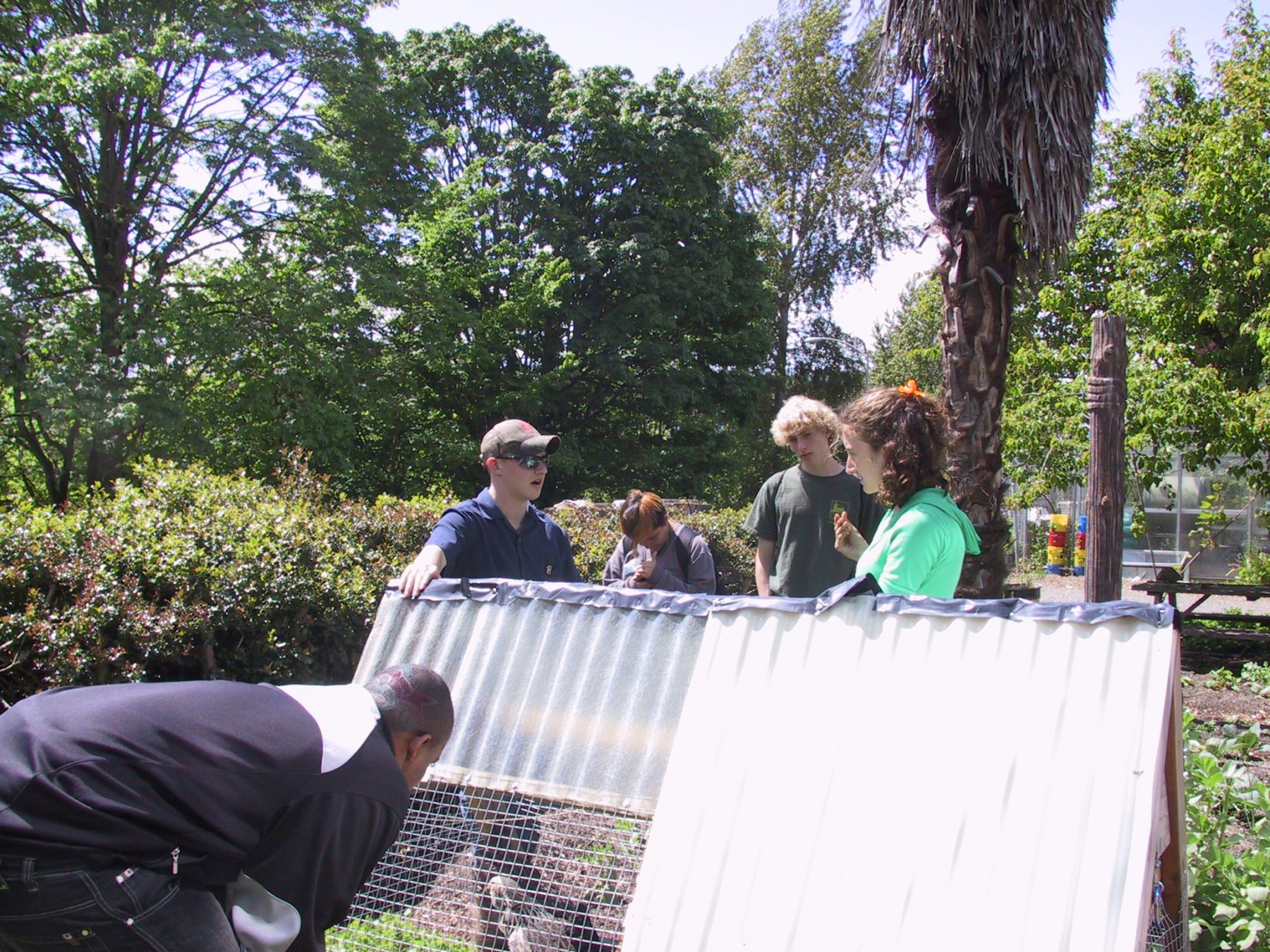
The two days that GROW high school students visited CUH and
the UW Farm were full of sunshine. Students from Susan Barth’s horticulture class at Nova High School and students from Jessica Torvik’s horticulture/ecology classes were introduced to resources for their GROW projects through scheduled tours and activities. Maggie Roses’ science classes from Ingraham focused on working with Lisa
Haglund and Patrick Mulligan on the site prep and plant installation in the
newly restored storm water garden at CUH.
Lisa Haglund is an undergraduate in Community, Environment and Planning
and has taken on the redesign and installation of part of the storm water
garden at CUH. For most students this was their first visit to the Center for Urban Horticulture. A main function of the GROW program is to engage high school students with the UW Botanic Gardens through the environmental education department at the Washington Park Arboretum.
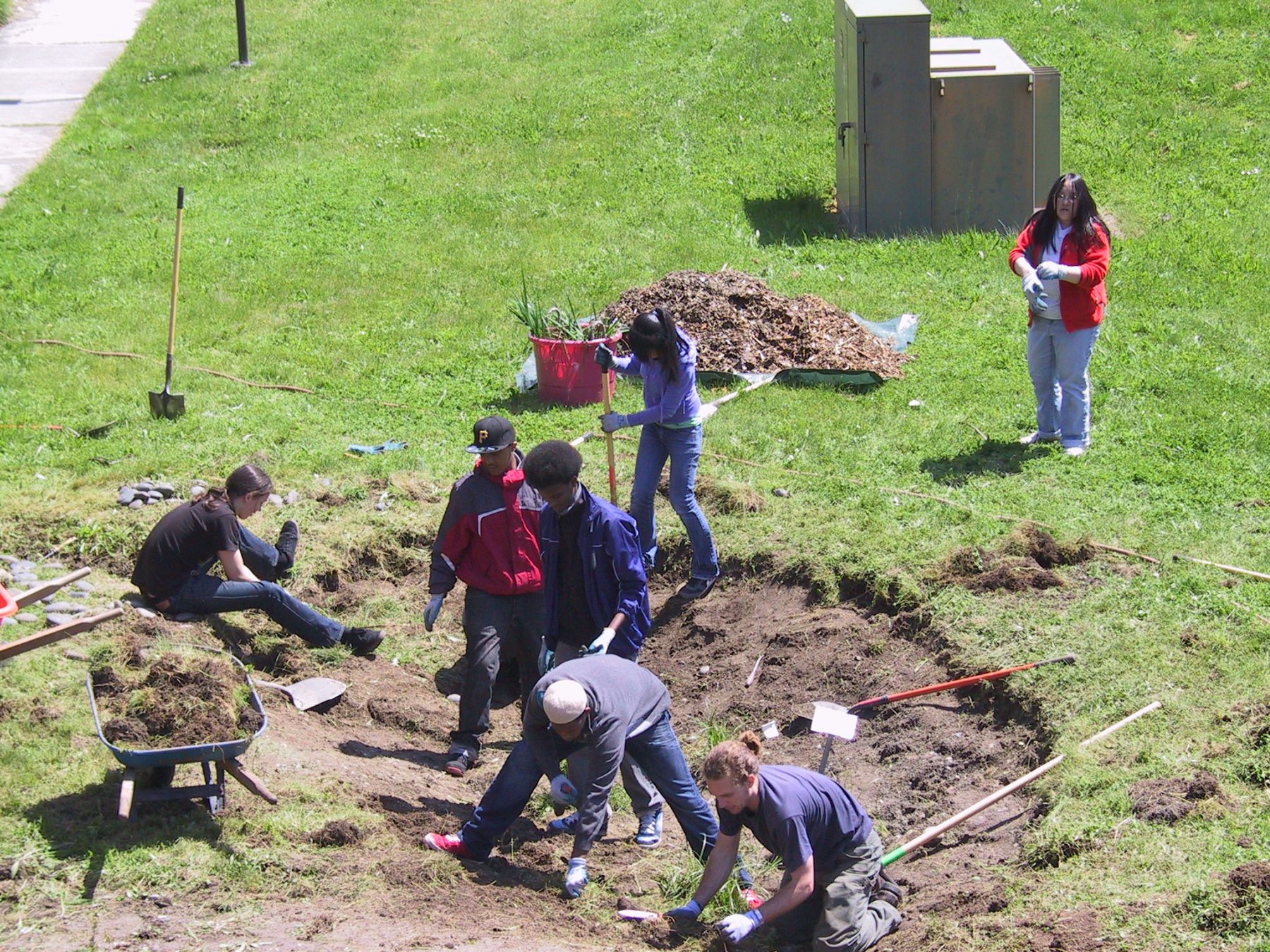
These field trips provided an opportunity to interact with faculty, students and staff and see how outdoor research is conducted and how undergraduates are engaged through projects and farm education at the university. They also could take back new knowledge and ideas in constructing their school gardens.
CUH tours and activities
Tours led by Restoration Ecologist Dr. Kern Ewing and gardener, Annie Bilotta, introduced them to research and display of plants found at CUH. Nathan Hale students toured UBNA for 1 1/2 hr., learning about native grasses versus introduced grasses, the benefit of shading to minimize invasive weed species, the survival of oaks post fire and where and how native prairie species thrive. Annie introduced them to the variety of plants demonstrated in the rain, fragrance and Soest gardens.
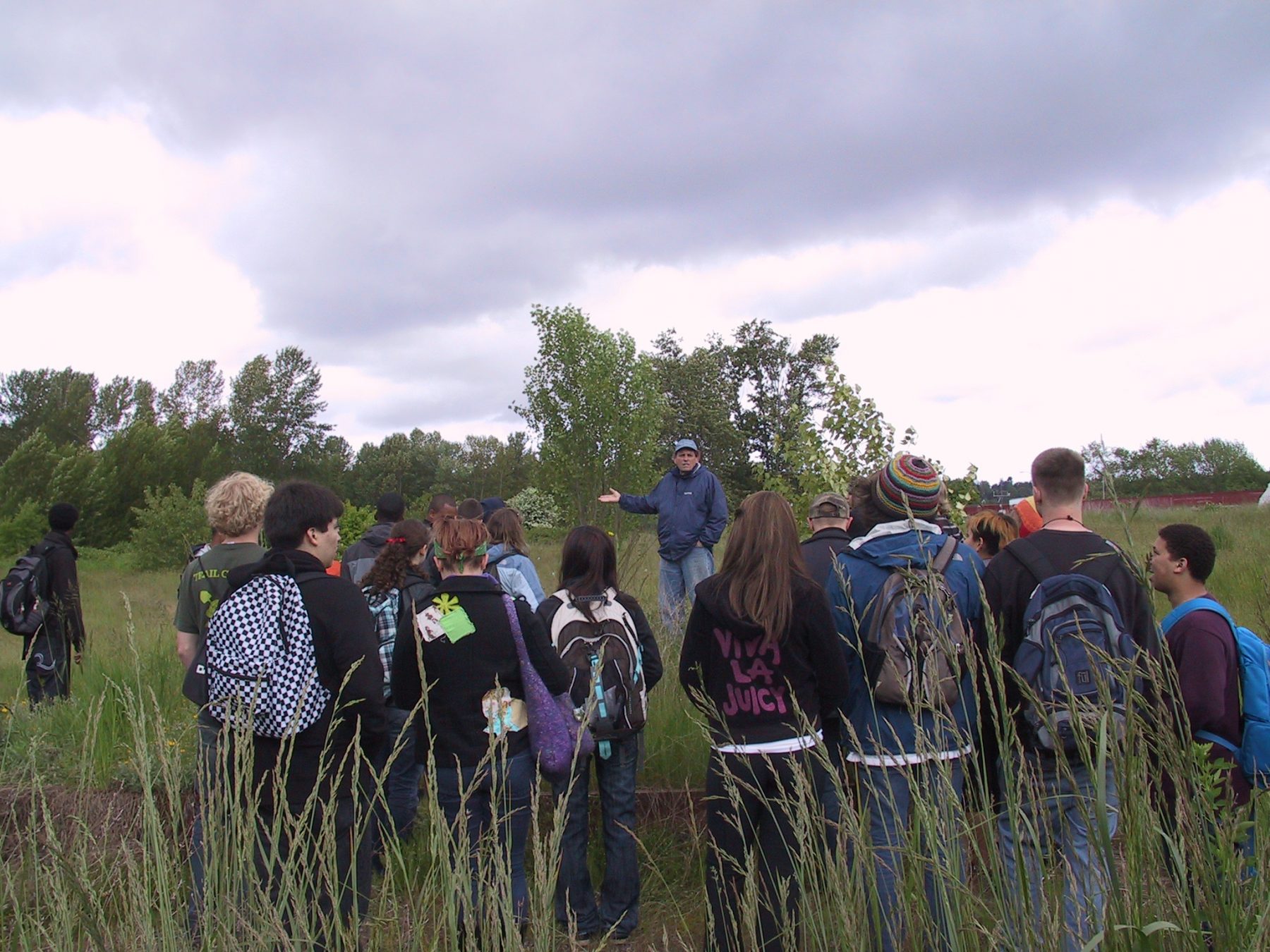
Nova students were introduced to Rare Care and the Miller Seed Vault by Wendy Gibble. After a mere few minutes in the vault, the students were eager to get back outside to a warmer environment. Miller Librarians Carrie Bowman and Tracy Mehlin gave overview tours of the library and a few students came away borrowing books from the loaner collection.
Interaction with UW undergraduates
While all students spent a small portion of the visit helping Lisa Haglund prep the site for the storm water garden, Ingraham students made this the focus of their trip to CUH. Not having a site on their school grounds to implement their own rain garden, they were bussed to CUH for a day of helping Lisa and Patrick work on her senior project.
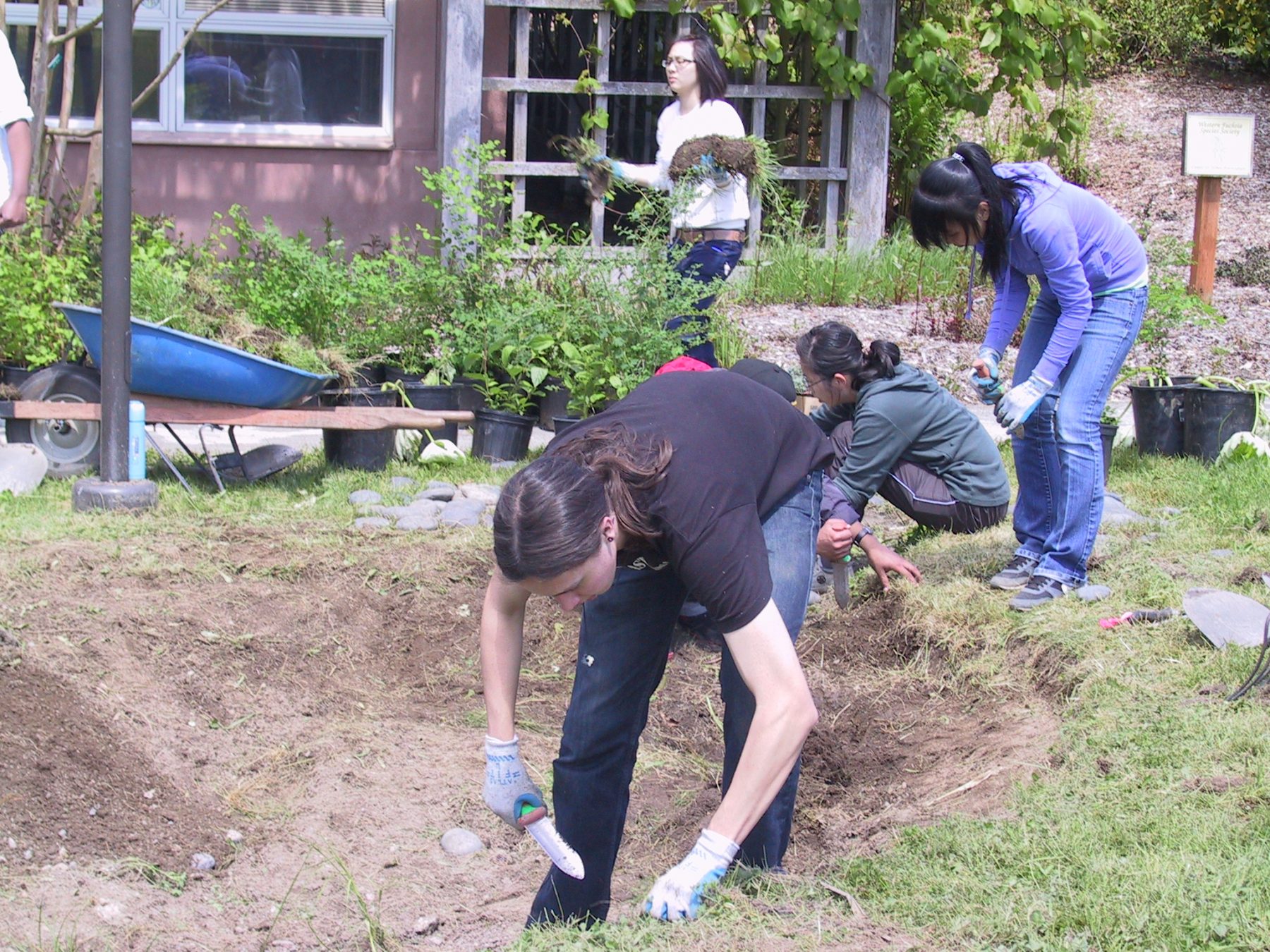
Using shovels and Hori Horis to remove sod, students assisted in the clearing of unwanted weeds and grass prior to the installation of selected native plant species to be planted in the deep depressions that collect storm water runoff.
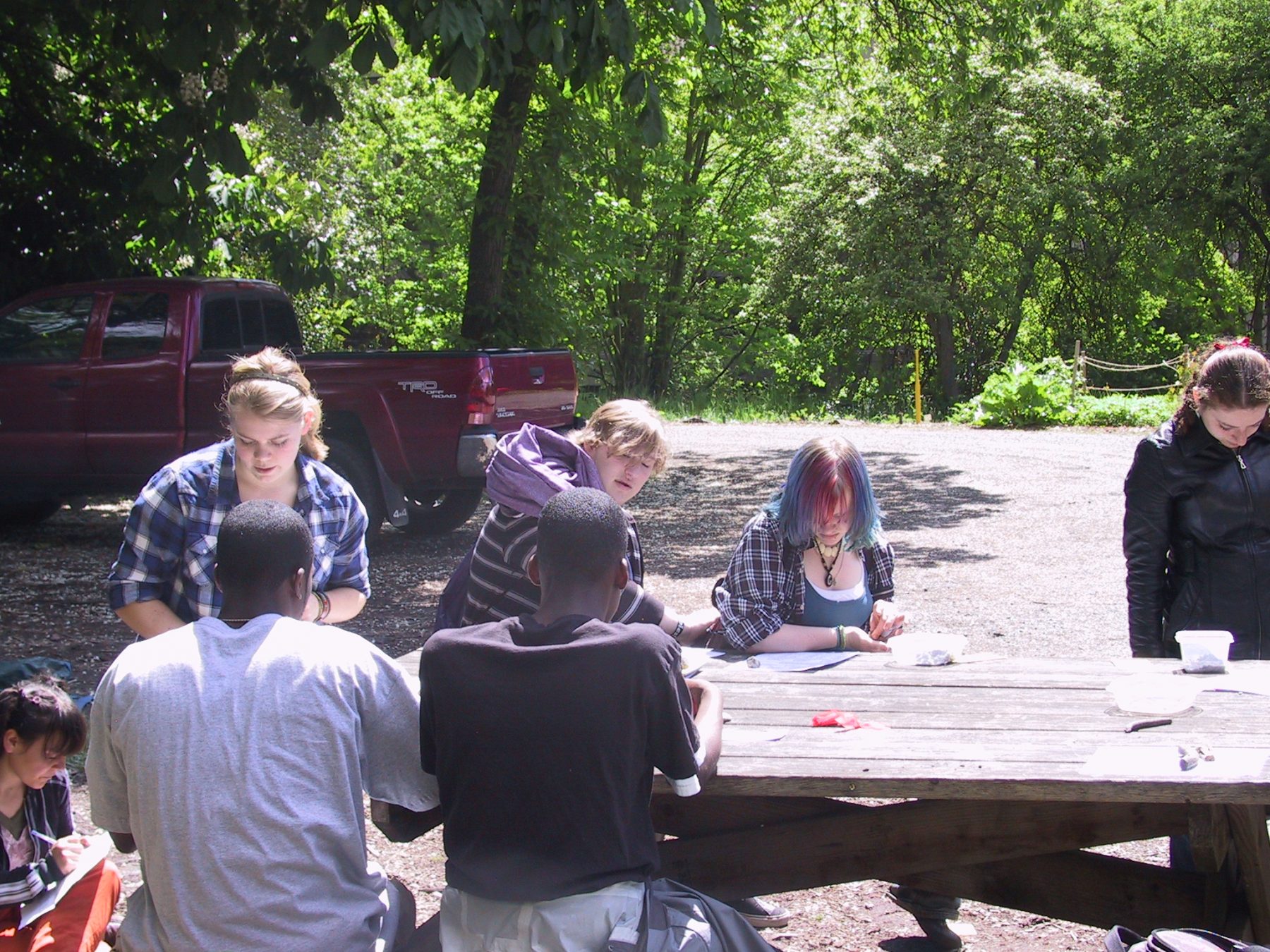
UW Farm students led Nova and Nathan Hale students on tours and students from Lilly Nash’s class led interactive sessions on soil structure, permaculture, plant identification (treasure hunt) and chicken farming to Nathan Hale students. There was high adventure when one chicken escaped being held by a Nova student and fled far beneath a spiny holly hedge. Luckily, the UW farm student was practiced in rounding up chickens and getting them safely back to their coop. More than anything else, the chickens impressed the students and I heard pleas for the teachers to allow chickens at their schools.
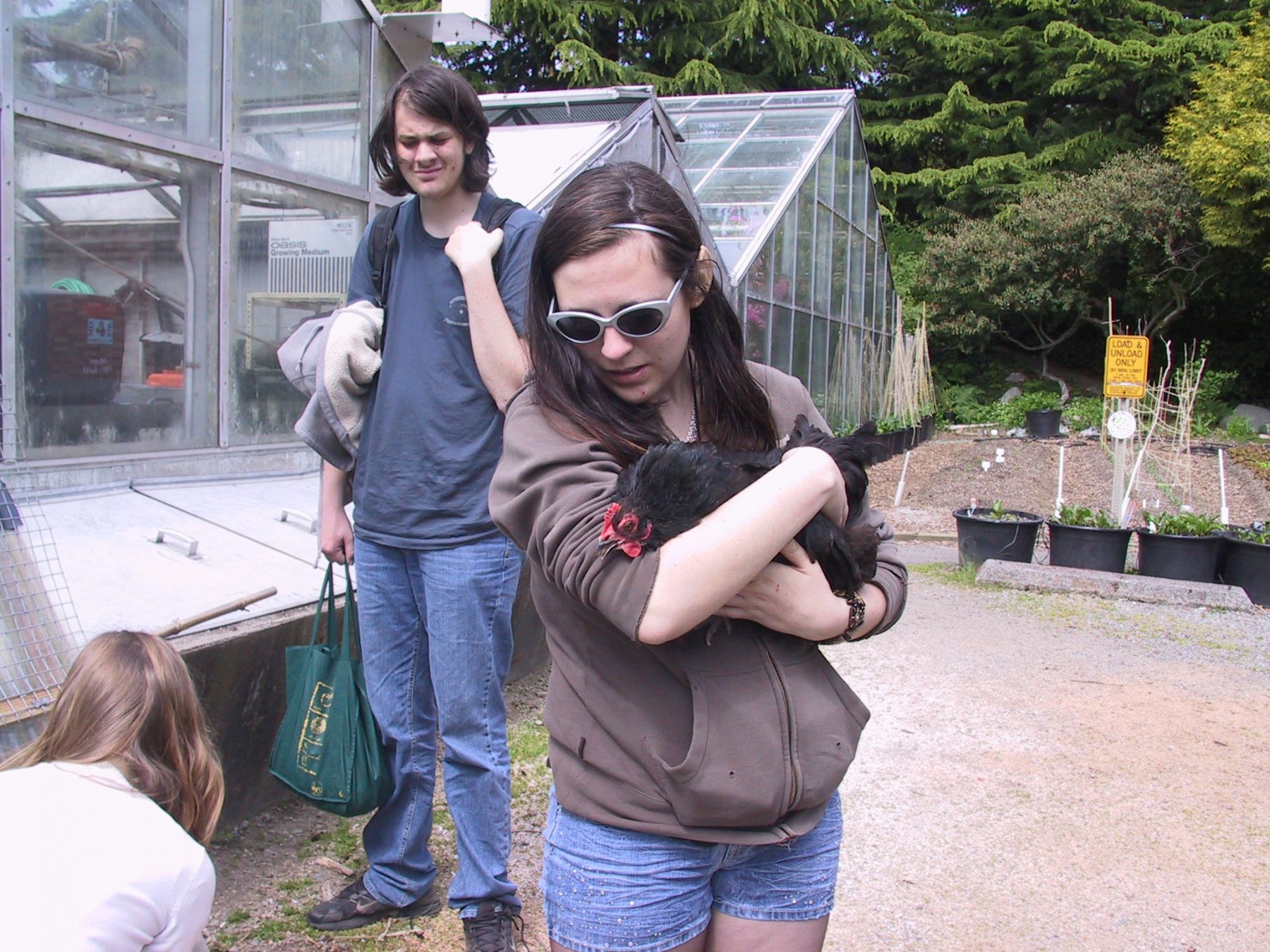
Benefits of Field Trips
Funding that was provided through the GROW program enabled Ingraham and Nathan Hale students to visit the university. A major obstacle in having high school students participate in environmental learning with the UW Botanic Gardens is transportation and time away from classes. The teachers were thankful to have their students learn outside of the classroom and their students got to view actual research sites, learn about seed saving techniques, interact with undergraduates at the UW (senior project, farm student lessons) and discover the Miller Library loan system. For the UW Botanic Gardens, the reward may be the lure of future students interested in restoration, conservation, ecology and/or horticulture.
